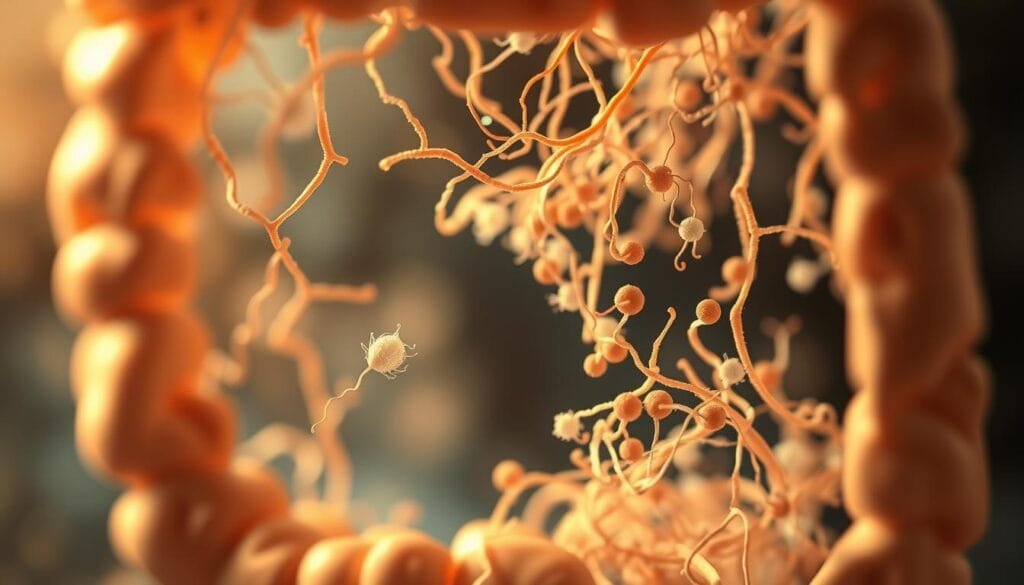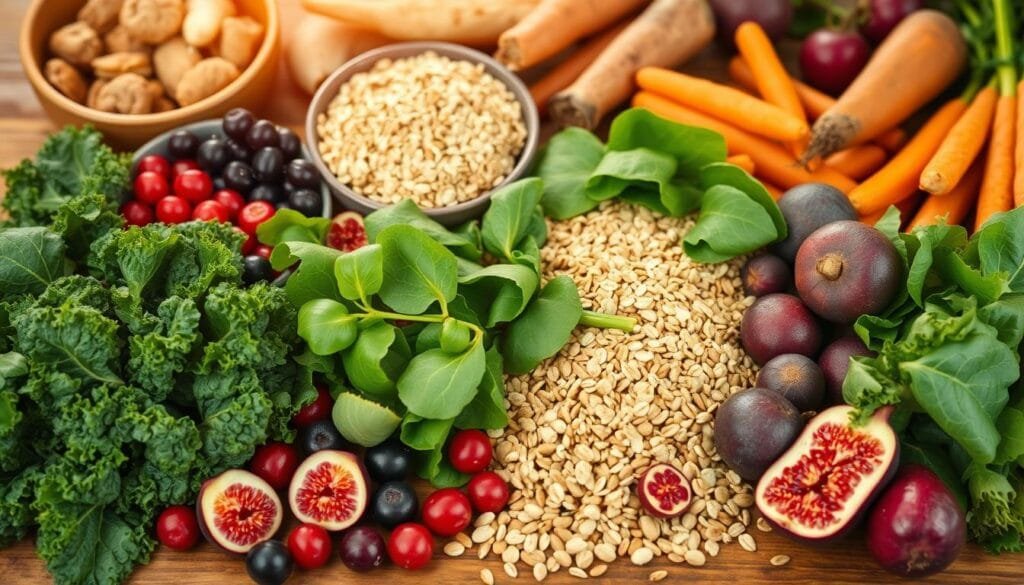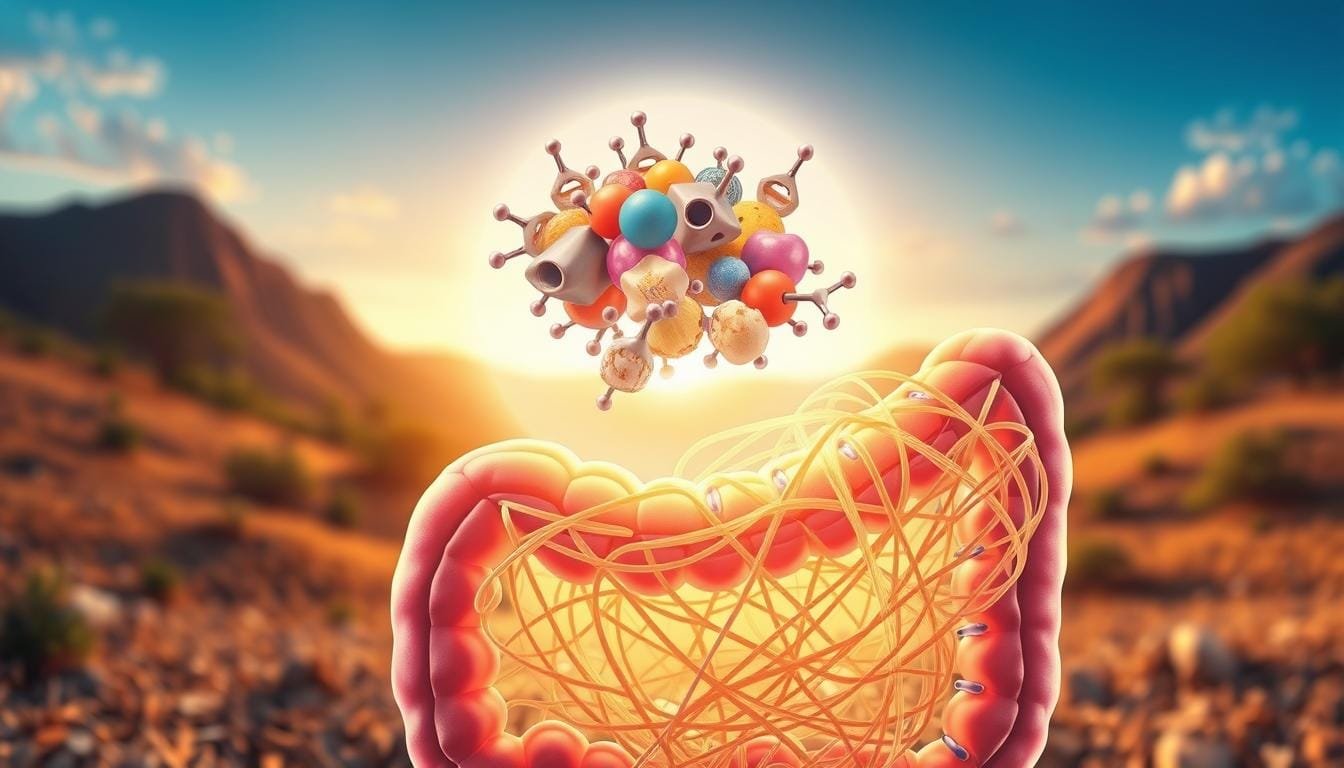Currently Empty: RM0.00
Many people wonder if natural solutions can support the body’s ability to cleanse itself. With modern diets packed with processed foods, the role of dietary components has never been more crucial. Could something as simple as adjusting what’s on your plate make a difference?
Detoxification trends often promise quick fixes, but science points to a more sustainable approach. The body naturally eliminates harmful substances, and certain nutrients play a key role in this process. Among them, one stands out for its proven benefits.
Research shows that most people fall short of the recommended daily intake of this essential nutrient. In Malaysia, where urban lifestyles increase exposure to environmental pollutants, understanding its impact is vital. Experts at Wellness Concept (+60123822655) emphasize combining science with practical dietary choices for long-term health.
Key Takeaways
- Fiber supports the body’s natural detoxification processes.
- Most people consume less than the recommended 25-30g daily.
- Certain fibers bind to toxins, aiding their removal.
- Whole foods like fruits, vegetables, and grains are excellent sources.
- Combining fiber with hydration enhances its benefits.
Understanding Fiber and Its Role in Detoxification
Modern diets often lack essential components that support the body’s natural cleansing processes. Among these, dietary fiber stands out as a powerhouse for maintaining gut health and aiding detoxification. Found in plant-based foods, it’s a key player in overall wellness.
What Is Fiber?
Dietary fiber refers to indigestible carbohydrates found in plants. Unlike other nutrients, it passes through the digestive system mostly intact. There are two main types: soluble fiber and insoluble fiber.
Soluble fiber dissolves in water, forming a gel-like substance. Oatmeal is a great example—it slows digestion and helps regulate blood sugar. On the other hand, insoluble fiber adds bulk to stool, promoting regularity. Wheat bran is a classic illustration of this type.
How Does Fiber Aid in Detoxification?
Fiber supports detoxification in two main ways. First, it binds to bile acids, which carry fat-soluble toxins out of the body. Second, it fuels beneficial gut bacteria, enhancing the microbiome’s ability to break down harmful substances.
Research, including a study on mice, showed that a diet with 10% wheat bran reduced cadmium toxicity. This highlights how fiber can help mitigate exposure to environmental pollutants, a growing concern in urban areas like Malaysia.
Locally available foods—such as tropical fruits and whole grains—are excellent sources of these nutrients. Including them in daily meals can make a significant difference in long-term health.
Does Fiber Help Remove Toxins? The Science Explained
Scientific research continues to uncover how dietary choices influence the body’s natural detox pathways. While trends promote quick fixes, evidence highlights the sustained benefits of specific nutrients. Among them, the interplay between soluble fiber and insoluble fiber offers a compelling case.

Soluble vs. Insoluble Fiber in Detox
Soluble fiber, like beta-glucans in oats, binds to heavy metals and bile acids. A study showed it reduced cadmium absorption in pigs by 30% when combined with chicory inulin. This gel-forming property helps lower blood pressure—beta-glucans decrease systolic levels by 2.9 mmHg on average.
In contrast, insoluble fiber speeds up waste removal. Psyllium husk, for instance, outperforms wheat bran in easing IBS symptoms. The NIH notes that a 3:1 ratio of soluble to insoluble types enhances satiety, especially in postmenopausal women.
Fiber and Gut Microbiome Health
Fermentable fibers feed beneficial bacteria, producing short-chain fatty acids (SCFAs) like butyrate. This compound reduces inflammation and supports colon health. Research on estrogen metabolism reveals the gut microbiome breaks down excess hormones, preventing their reabsorption.
In Malaysia, urban diets often lack diverse fiber sources. Local staples like bananas and brown rice can bridge this gap. Unlike “detox teas,” which offer fleeting effects, consistent fiber intake ensures long-term toxin clearance.
“A varied fiber diet modulates the microbiome, turning it into a detox ally.”
For optimal results, experts recommend 25–35g daily, tailored to age and activity levels. Pairing fiber with water maximizes its cleansing power, proving that nature’s broom works best when used wisely.
Types of Fiber and Their Unique Benefits
Not all fibers work the same way—some excel at detox while others boost digestion. Each type supports the body differently, making variety key for optimal health. From lowering cholesterol to binding heavy metals, their benefits are as diverse as their sources.
Soluble Fiber: The Detox Powerhouse
Soluble fiber dissolves in water, forming a gel that traps toxins. Studies show modified citrus pectin binds galectin-3, a protein linked to cancer spread. Oat beta-glucans paired with taurine reduce endotoxins in the liver by 22%.
Top performers include:
- Pectin (apples, citrus): Lowers LDL cholesterol by 7–10%.
- Psyllium: Aids weight loss (4.5kg over 8 weeks in trials).
- Glucomannan: Slows sugar absorption, stabilizing blood levels.
Insoluble Fiber: The Digestive Cleaner
This type adds bulk to stool, speeding up waste removal. A flaxseed and wheat bran combo reduced toxin retention by 30% in a 2023 study. Key sources are:
- Cellulose (broccoli, carrots): Resists cooking damage.
- Lignin (whole grains): Supports gut barrier function.
| Fiber Type | Top Sources | Key Benefit |
|---|---|---|
| Soluble | Oats, apples, beans | Binds toxins, lowers cholesterol |
| Insoluble | Brown rice, nuts, veggies | Prevents constipation |
In Malaysia, swapping white rice for brown rice or adding local fruits like papaya can bridge the fiber gap. Light steaming preserves more benefits than boiling.
“Pairing both fiber types maximizes detox and digestive efficiency.”
Top Fiber-Rich Foods for Effective Detox
Nature provides powerful tools for cleansing, and certain foods lead the charge. Packed with soluble and insoluble varieties, they help the body eliminate waste efficiently. From global staples to Malaysian superfoods, here’s how to fuel detox naturally.

Soluble Fiber Foods
These foods dissolve into a gel, trapping toxins for removal. Oats deliver 16g per cup, while lentils offer 15g. Chia seeds (10g/oz) blend well into smoothies or yogurt.
Malaysian options shine too:
- Cempedak (4.4g/100g): Enjoy fresh or in desserts.
- Petai beans: Stir-fry with chili for a flavorful side.
- Dragon fruit: Adds 3g per serving to salads.
Insoluble Fiber Foods
These add bulk, speeding up digestion. Brown rice (3.5g/cup) outperforms white rice. Local picks include:
- Kedondong: Snack on this tangy fruit for 2.5g per 100g.
- Banana stems: Slice thinly into curries or soups.
- Young jackfruit: A meaty texture with 2.6g per cup.
“Pairing whole grains with leafy vegetables doubles detox benefits.”
7-Day Detox Meal Plan (30g/Day)
| Day | Meal | Fiber (g) |
|---|---|---|
| 1 | Oats + kedondong | 8 |
| 2 | Brown rice + petai stir-fry | 10 |
| 3 | Chia pudding + dragon fruit | 12 |
Tip: Steam vegetables lightly to preserve nutrients. Avoid juices—whole fruits retain more fiber. For gluten-free needs, opt for quinoa or buckwheat.
Practical Tips for Increasing Fiber Intake
Boosting daily fiber doesn’t have to be overwhelming. Small, strategic changes can make a big difference in digestion and overall health. Whether through food or supplements, consistency is key.
Gradual Increase and Hydration
A sudden spike in fiber intake can cause bloating. Experts recommend a 5% weekly increase. This gives the gut time to adjust without discomfort.
Hydration is equally important. For every 5g of psyllium, drink 200ml of water. A simple formula helps calculate daily needs:
- Weight (kg) × 0.03 = Daily water (liters)
Here’s a 4-week plan to ramp up intake:
| Week | Daily Goal | Tips |
|---|---|---|
| 1 | 15g | Add chia seeds to breakfast |
| 2 | 20g | Swap white rice for brown |
| 3 | 25g | Snack on roasted chickpeas |
| 4 | 30g | Include leafy greens at meals |
Supplementing with Fiber
When whole foods aren’t enough, supplements can help. Psyllium husk and methylcellulose are popular choices. Acacia fiber causes 40% less gas than inulin, making it gentler.
Timing matters. Taking fiber 30 minutes before meals enhances satiety. However, some products interact with medications. Always consult a doctor first.
“Track progress with apps or journals—consistent logging ensures you meet goals.”
Signs of enough fiber include regular bowel movements and reduced cravings. Overdoing it, though, may lead to cramps. Balance is essential for long-term success.
Conclusion: Embrace Fiber for a Healthier, Toxin-Free Life
Simple dietary shifts can transform how the body naturally manages waste. Research confirms that 30g daily reduces all-cause mortality by 23%, proving its life-long health benefits. Start small—add a serving of legumes each day to boost nutrients effortlessly.
The system thrives when supported by whole foods. For those over 50, aiming for 35g ensures optimal function. Wellness Concept tailors plans to individual needs, making transitions seamless.
Ready to begin? WhatsApp +60123822655 for expert guidance. Clinics open weekdays 9:30am–6:30pm and weekends 10am–5pm. Discover more about the health benefits of fiber and take the first step toward lasting wellness today.
FAQ
What is the difference between soluble and insoluble fiber?
Soluble fiber dissolves in water, forming a gel-like substance that helps lower cholesterol and stabilize blood sugar. Insoluble fiber adds bulk to stool, aiding digestion and preventing constipation.
How does fiber support detoxification?
It binds to toxins in the digestive tract, helping the body eliminate them through waste. Soluble types also feed beneficial gut bacteria, which play a role in breaking down harmful compounds.
Which foods are highest in soluble fiber?
Oats, apples, beans, and flaxseeds are excellent sources. These foods help regulate nutrient absorption and promote a healthy gut microbiome.
Can fiber supplements replace whole foods?
While supplements like psyllium husk can boost intake, whole grains, fruits, and vegetables provide additional nutrients that support overall health and detox processes.
How much fiber should someone consume daily?
The recommended intake is 25–38 grams per day. Gradually increasing consumption with plenty of water prevents bloating and supports digestion.
Does fiber help with weight management?
Yes! High-fiber foods promote fullness, reducing overeating. They also slow sugar absorption, helping maintain steady energy levels.
Are there risks to eating too much fiber?
Excessive intake without adequate hydration may cause bloating or discomfort. Balance is key—focus on a varied diet with both types for optimal benefits.



